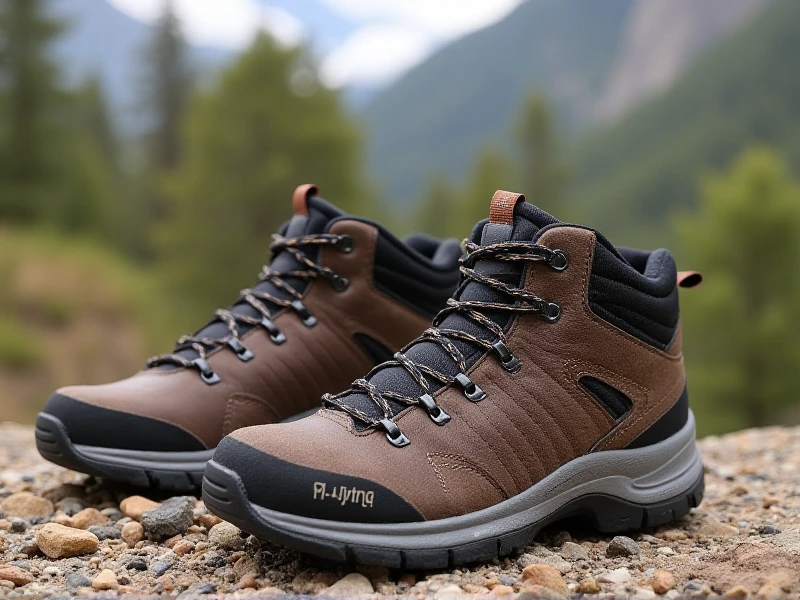Finding the Perfect Fit: Your Essential Guide to Men's Hiking Shoes
2025-06-02

Stepping onto a trail, whether tackling a gentle woodland path or navigating a rugged mountain ascent, demands reliable support for your feet. Your men's hiking shoes are arguably the most critical piece of gear you'll choose. The right pair empowers your stride, boosts confidence, and prevents the discomfort that can turn adventure into agony. Selecting the wrong one, however, invites blisters, fatigue, and potential injury. Understanding the nuances of men's hiking shoes is vital for any outdoor enthusiast ready to explore.
Why Hiking Shoes Matter: More Than Just Footwear
Think of your hiking shoes as the interface between you and the terrain. They directly impact:
1. Stability & Safety: Gripping outsoles prevent slips on wet rocks, roots, and loose gravel. Adequate ankle support (especially in boots) minimizes rollovers on uneven ground. Solid men's hiking boots excel on rough trails with heavy packs.
2. Comfort & Endurance: Proper cushioning absorbs shock, protecting joints over miles. Breathable materials and moisture-wicking linings keep feet dry and comfortable, reducing hot spots. The right fit ensures you can hike longer without debilitating pain.
3. Protection: Rugged toe caps shield against stubbed toes. Durable uppers fend off scrapes and abrasions from rocks and brush. Waterproof membranes keep feet dry in puddles, streams, and wet conditions (though breathability is a trade-off).
4. Performance & Enjoyment: Unstable or ill-fitting footwear drastically reduces trail enjoyment. Reliable men's trekking shoes or boots free your mind to focus on the scenery, not foot pain.
Decoding the Different Styles of Men's Hiking Shoes
Not all trails are created equal, and neither are hiking shoes. Choices typically fall into three main categories, each excelling in specific scenarios:
1. Trail Runners/Hiking Shoes: Lowest cut, most flexible and lightweight. Ideal for:
Shorter day hikes on well-maintained trails.
Hikers prioritizing speed and agility.
Conditions where water resistance is optional. Popular examples include the versatile MERRELL MOAB series or Saucony Peregrine trail runners adapted for hiking.
2. Hiking Boots: Provide mid-height ankle support, a good blend of stability and flexibility. Perfect for:
Most day hiking and shorter backpacking trips.
Moderate terrain with varied surfaces.
Hikers needing more ankle support than a shoe. Men's hiking boots like the Salomon Quest or Columbia Newton Ridge Plus offer reliable all-around performance.
3. Backpacking Boots: Tall, stiff shanks, maximum support and durability. Essential for:
Extended backpacking trips carrying heavy loads (30 lbs).
Extremely rough, rocky, or off-trail terrain.
When maximum ankle support and protection are paramount. Options include the burly Lowa Renegade or Zamberlan Vioz models.
Choosing Your Perfect Men's Hiking Shoes
Selecting the right pair is crucial. Skip ill-fitting street shoes that cause blisters on tough trails. Quality men's hiking shoes need to work with your feet. Here’s how:
1. Fit is Paramount (This Can't Be Stressed Enough!): This isn't like buying sneakers.
Shop Late Day: Feet naturally swell after activity. Mimic trail conditions.
Wear Appropriate Socks: Bring the hiking socks you plan to use – thickness matters!
Proper Length & Width: You should have about a thumbnail’s width (roughly half an inch) of space ahead of your longest toe. Ensure adequate width; feet shouldn't feel squeezed or slide sideways.
Heel Lock: Your heel must sit firmly with minimal lift when walking. Blisters form quickly from friction.
Toe Box: Wiggle room is essential! Toes need space to move naturally without cramming into the front.
Walk Incline/Decline if Possible: Many reputable outdoor stores have ramps. Test how your feet feel going up and downhill.
2. Consider the Terrain & Load:
Light trails, day hikes: Trail runners or lightweight shoes. Choose based on ankle preference.
Moderate trails, occasional backpacking: Mids provide security.
Rugged terrain, heavy loads: Sturdy boots deliver needed protection and support.
3. Water Resistance: Membrane Technology vs. Breathability:
Waterproof (e.g., GORE-TEX): Essential for wet climates, crossing streams, hiking in snow/wet conditions. Traps some heat.
Non-Waterproof/Breathable: Excellent for dry conditions/hot weather hikes, draining & drying significantly faster if wet. Prioritize durability over waterproofing in these models.
4. Traction & Outsole: Deep, multi-directional lugs made of durable rubber (like Vibram) offer the best grip on diverse surfaces. Look for a pattern designed for the soil/rock types common in your hiking area.
5. Support & Cushioning:
Support: Depends on personal biomechanics and load carried. A stiffer shank provides better support under heavy weight.
Cushioning: More cushioning is preferable for longer miles on harder surfaces. Less cushioning provides better "trail feel" but less shock absorption.
Caring for Your Investment
Proper maintenance extends the life of your men's hiking footwear significantly:
Clean After Use: Brush off dirt and mud. Wash gently with a soft brush, mild soap (no detergents), and lukewarm water. Avoid soaking leather excessively. Air dry thoroughly, away from direct heat. Remove insoles.
Condition Leather: Regularly apply a quality leather conditioner or wax to keep leather supple and water-resistant. Beeswax-based products like Nikwax are popular.
Waterproof Maintenance: Reapply Durable Water Repellent (DWR) treatment on uppers regularly (as per product instructions) to maintain water-repellency after cleaning.
Storage: Store in a cool, dry place, ideally stuffed with paper to retain shape.
Footwear is Your Foundation on the Trail
Choosing the perfect men's hiking shoes is a highly personal journey. There's no universal best, only what's best for your feet, the specific trails you love, and how you like to hike. Investing time in research, prioritizing fit above all else, and understanding the demands of your adventures will pay dividends on every step you take. Break them in on shorter walks before embarking on major hikes. When you find that perfect pair, you’ll know. Your feet will thank you, mile after glorious mile. So lace up and discover your path!
Category: